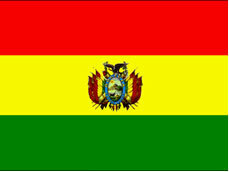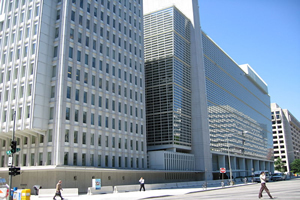Made up only of South American countries located in Andean America (Bolivia, Colombia, Ecuador and Peru), the Andean Community was created in 1969 through the Cartagena Agreement. The first name of this economic bloc was Pacto Andino and, only in 1997, did it receive the current nomenclature. The headquarters of the Andean Community is located in the city of Lima, capital of Peru.
Two other countries have already been full members of the Andean Community: Chile (from 1969 to 1976) and Venezuela (from 1973 to 2006). This economic bloc currently has five member nations – Argentina, Brazil, Chile, Paraguay and Uruguay, in addition to two observer countries: Mexico and Panama.
The administrative structure of this economic bloc is formed by the institutions of the Andean Integration System (SAI), among the main ones are: Andean Presidential Council, Council of Foreign Ministers, Commission, General Secretariat, Andean Parliament, Court of Justice, Latin American Reserves Fund (FLAR) and Simón University Bolivar.
The primary objectives of the Andean Community are:
- Carry out commercial, economic and political integration between the member countries of the bloc;
- Facilitate their participation in the regional integration process, aiming at the progressive formation of a Latin American Common Market;
- Promote balanced and harmonious development of member countries through integration and economic and social cooperation;
- Provide more jobs;
Do not stop now... There's more after the advertising ;)
- Reduce the development differences between the member countries of the Andean Community;
- Promote the improvement of the population's quality of life;
- Improve the position of the bloc's countries in the global economic context.
The member countries of the Andean Community have a population of around 100 million inhabitants, occupying a territorial extension of 3,798,000 square kilometers. In 2008, the Gross Domestic Product (GDP) generated by the members of the Andean Community reached the mark of 438.9 billion dollars.
Characteristics of the countries that make up the Andean Community:

Bolivia:
Territorial extension: 1,098,581 km²
Population: 9,862,860 inhabitants
Capital: La Paz (government and administrative headquarters), Sucre (legal)
Gross Domestic Product (GDP): 16.7 billion dollars
Currency: Bolivian
Human Development Index (HDI): 0.643.

Colombia:
Territorial extension: 1,138,914 km²
Population: 45,659,709 inhabitants
Capital: Bogota
Gross Domestic Product (GDP): 242.2 billion dollars
Currency: Colombian Peso
Human Development Index (HDI): 0.689.

Ecuador:
Territorial extension: 283,561 km²
Population: 13,625,069 inhabitants
Capital: Quito
Gross Domestic Product (GDP): 52.6 billion dollars
Currency: US Dollar
Human Development Index (HDI): 0.695.

Peru:
Territorial extension: 1,285,216 km²
Population: 29,164,883 inhabitants
Capital: Lima
Gross Domestic Product (GDP): 127.4 billion dollars
Currency: Sol Novo
Human Development Index (HDI): 0.723.
By Wagner de Cerqueira and Francisco
Graduated in Geography
Brazil School Team
Economic blocks - geography - Brazil School
Would you like to reference this text in a school or academic work? Look:
FRANCISCO, Wagner de Cerqueira and. "Andean Community"; Brazil School. Available in: https://brasilescola.uol.com.br/geografia/comunidade-andina.htm. Accessed on June 27, 2021.

